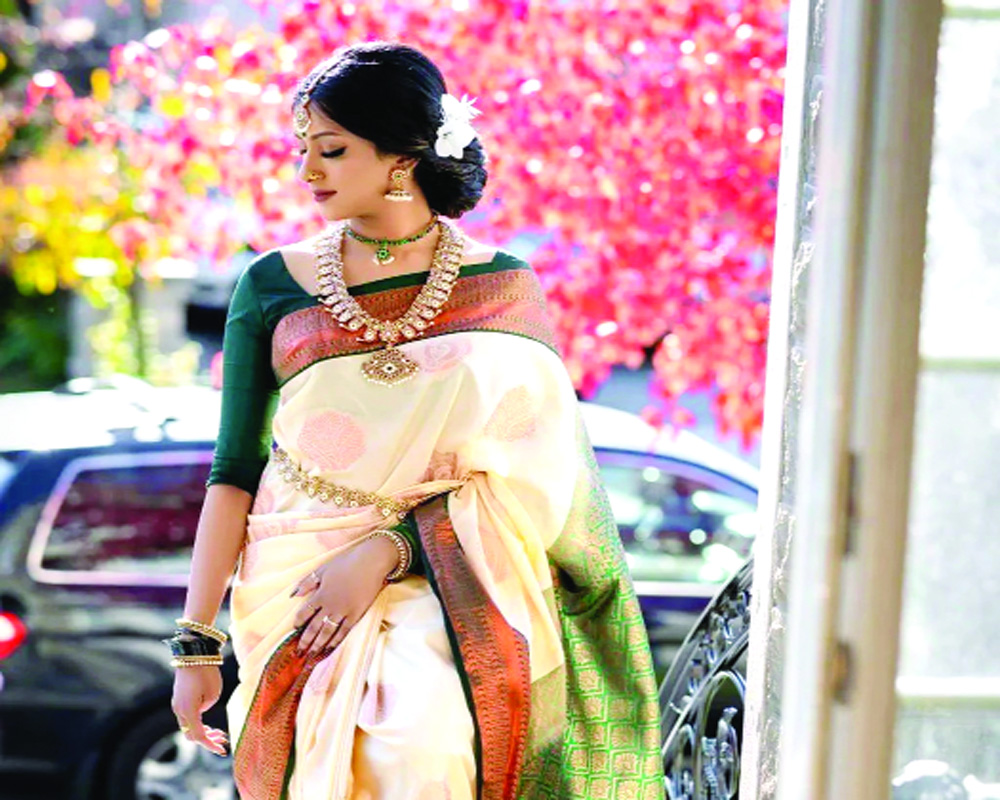Saree, a lengthy piece of fabric – usually six to nine yards – is a visual representation of the diverse cultural heritage of India
Today, millions of Indian women wear it, regardless of region, socio-economic class, or age. yes it is saree we are talking about.
For some, it is a part of their daily lives, serving as both comfort and functionality. While some regard the saree as a sophisticated status symbol, at its core, it represents much more: it houses the beauty, grace, and essence of India itself. A saree can be found everywhere in India, from the bustling streets of cities to the peaceful nooks of rural villages. Versatility is unmatched.
The kaleidoscope of traditions is reflected in a single piece of cloth, which is worn differently across the country’s many regions. It includes the vivid bandhani of Gujarat, the red-and-white Garad of Bengal, and the transparent silk of Kanchipuram.
Each of them has a unique story, and each fold depicts the cultural diversity of its region. The saree has great cultural and emotional significance, regardless of how one views its aesthetic merit. For many women, their first saree is a rite of passage, a moment that marks an important milestone in life.
Whether draped by a bride on her wedding day or by a mother passing down a family heirloom to her daughter, the saree carries with it memories, emotions, and history.
The act of draping a saree is itself an art form, handed down through generations, symbolising a connection between past and present. In a world rapidly influenced by fast fashion and global trends, the saree remains a steadfast emblem of tradition.
Yet, it has adapted to modern sensibilities. Fashion designers have reinterpreted the saree, infusing contemporary designs, bold prints, and innovative draping styles. From Bollywood red carpets to international runways, the saree has evolved, but its essence remains unchanged—it continues to be a garment that celebrates femininity, confidence, and culture.
For some, the saree is a status symbol. Luxurious silk sarees adorned with intricate zari work or hand-painted masterpieces showcase India’s rich textile heritage and are often worn at grand occasions and festivals. These sarees, crafted with love and precision by artisans, are not merely garments; they are wearable art, reflecting the wearer’s appreciation for craftsmanship and elegance.
At the same time, for millions of women across India, the saree is simply everyday wear. Cotton sarees, lightweight and breathable, are the attire of choice for women who go about their daily routines—whether they are tending to fields, managing homes, or leading boardroom meetings. Despite its ubiquity, the saree never loses its charm. It transforms the mundane into the majestic, turning an ordinary day into a celebration of self-expression. Ultimately, the saree is more than just a draped cloth.
It is an embodiment of India’s diverse cultures, its history, and its enduring beauty. Whether worn as a necessity or as a statement of style, the saree continues to unite women across time, reminding us all of the timeless elegance and grace that define India’s soul.
(The writer is a motivator and freelance writer; views are personal)


























